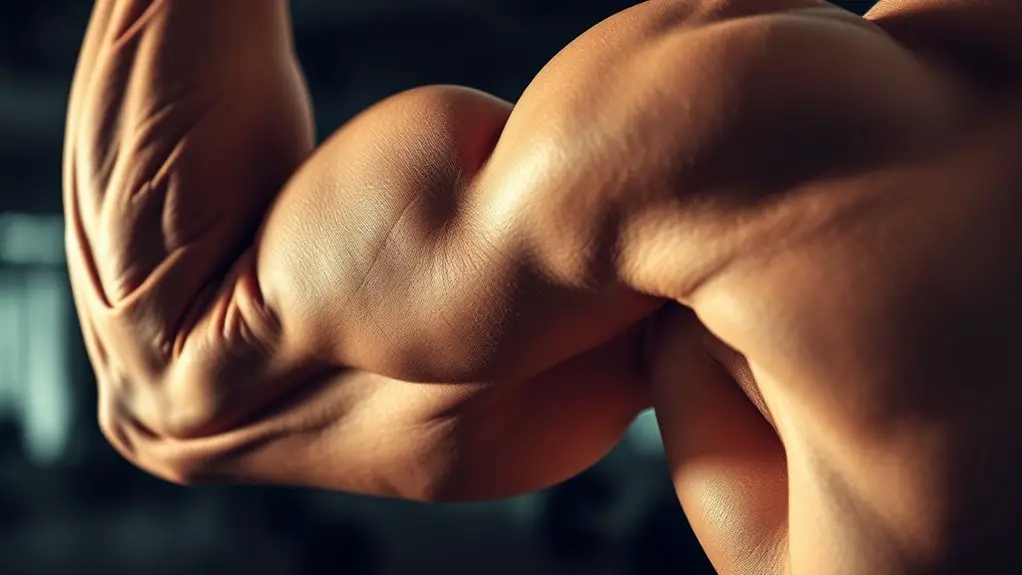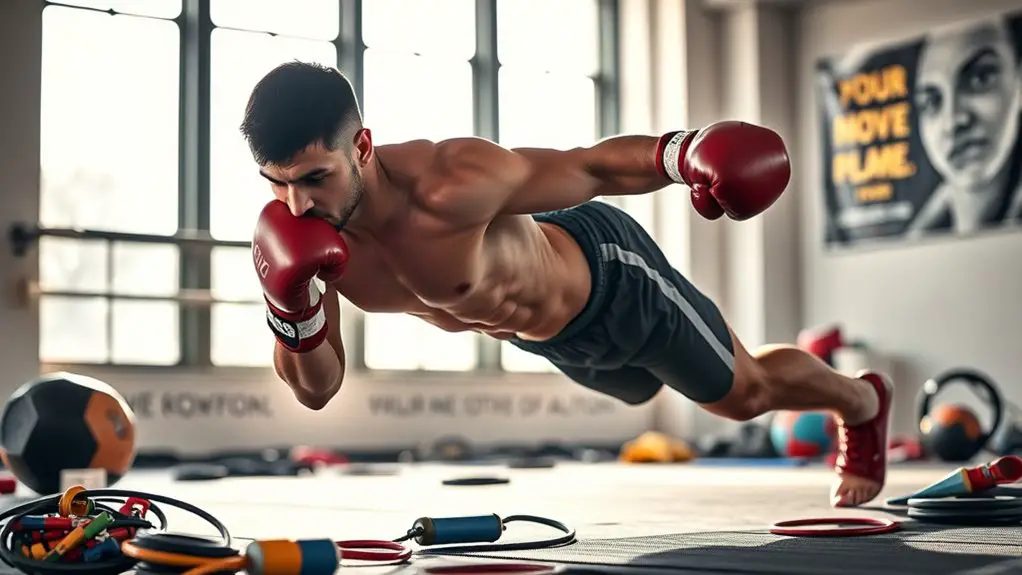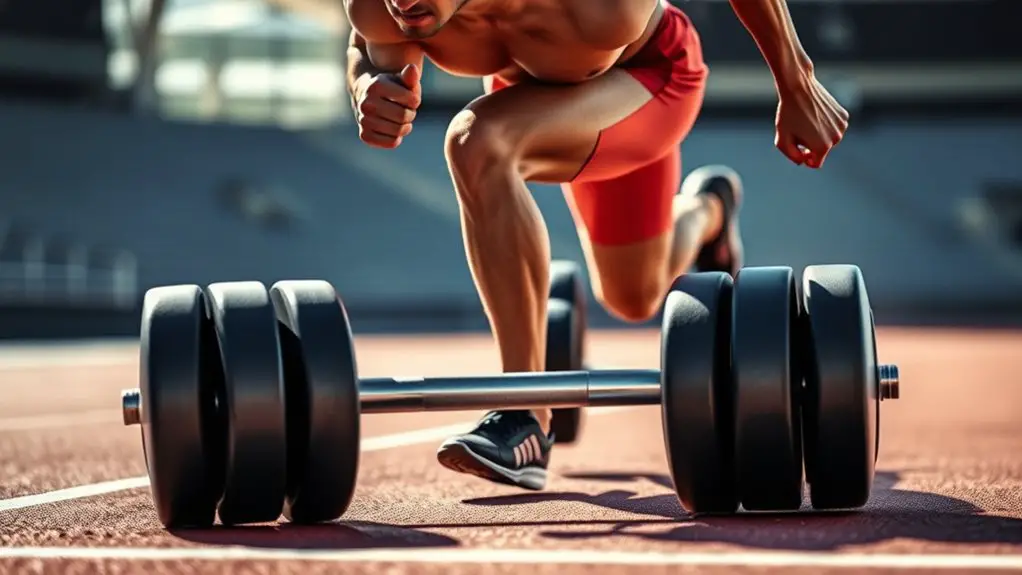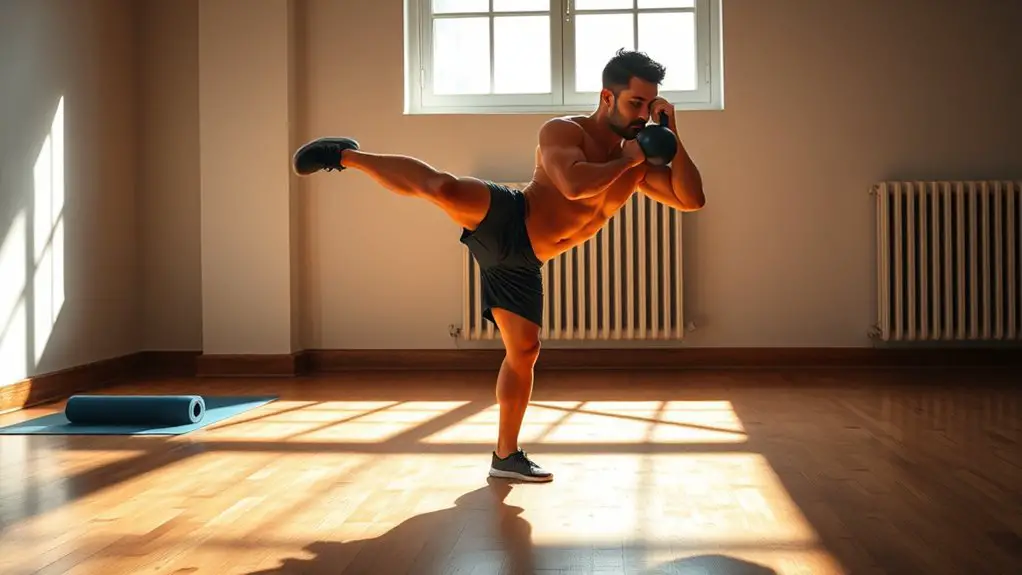Muscle insertions play a significant role in shaping your physique and performance. They determine how your muscles look and function, influencing aesthetics like muscle length and symmetry. Your genetics also affect muscle attachment, creating unique variations in how you develop. By understanding these factors, you can tailor your training for ideal results and embrace your individual body. Keep exploring to uncover more about how to maximize your potential based on muscle insertions.
Understanding Muscle Insertions
When you immerse yourself in the study of muscle insertions, you'll quickly realize how essential they are for movement and aesthetics. Muscle anatomy reveals that each muscle has specific insertion types that dictate how it operates. These insertions connect muscles to bones, allowing for the beautiful and powerful movements your body can perform.
Understanding the different insertion types—like direct and indirect—helps you appreciate how muscles work together to create fluidity in motion. Direct insertions attach straight to the bone, providing strength and stability, while indirect insertions, often via tendons, offer flexibility and a wider range of motion.
The Role of Genetics in Muscle Attachment
Genetics plays a huge role in how your muscles attach and can greatly affect your overall aesthetics. You might notice variations in muscle length and shape that can be traced back to your genetic makeup. Understanding these factors can help you appreciate your unique physique and how it influences your fitness goals.
Genetic Influence on Aesthetics
While many factors contribute to athletic performance and physical aesthetics, the role of genetics in muscle attachment is particularly significant. Your genetic predisposition influences how your muscles attach to bones, shaping your overall physique. This isn't just about strength; it's about how your body looks and moves. You might notice that some individuals naturally possess a more aesthetically pleasing muscle structure, showcasing the aesthetic diversity that genetics brings to the table. Embracing your unique genetic makeup can empower you to focus on your strengths rather than compare yourself to others. Understanding this genetic influence allows you to appreciate your body for what it is and encourages you to find freedom in your own fitness journey.
Muscle Length Variation Effects
The variations in muscle length, influenced by your genetic makeup, can markedly impact both your athletic performance and physical appearance. Longer muscles may provide greater leverage, enhancing strength during specific exercises, while shorter muscles can offer quicker contractions, affecting speed and agility. This genetic diversity also influences muscle flexibility and potential training adaptations.
| Muscle Length Variation | Effect on Performance |
|---|---|
| Longer Muscles | Greater strength and power |
| Shorter Muscles | Increased speed and agility |
| Flexible Muscles | Enhanced range of motion |
| Stiffer Muscles | Limited flexibility, risk of injury |
Understanding these variations allows you to tailor your training for the best results, embracing your unique genetic advantages.
How Muscle Insertions Affect Aesthetics
Understanding how muscle insertions influence aesthetics is essential for anyone aiming to achieve a desirable physique. The way your muscles are attached to bones can dramatically affect their shape and, in turn, your overall aesthetic appeal. For instance, higher muscle insertions can create a more pronounced peak in biceps, giving them that coveted look. Conversely, lower insertions might yield a longer muscle belly, which can still look impressive, but may not align with traditional ideals of muscularity.
You've likely noticed that individuals with different muscle insertions can present very different aesthetics, even if they train the same way. Recognizing your unique muscle shape can empower you to tailor your workouts and enhance your results. By understanding these nuances, you can embrace your individuality while working toward that ideal physique you desire, ultimately celebrating the freedom to shape your body as you see fit.
Symmetry and Proportion in Bodybuilding
Muscle insertions play a significant role in how symmetry and proportion are perceived in bodybuilding. If you're aiming for aesthetic goals, understanding your unique muscle balance is vital. Each individual's muscle insertions and lengths can create different visual effects, influencing how your physique is viewed.
To achieve that coveted symmetry, it's important to focus on both the size and shape of your muscles, ensuring they complement each other. When one area is overdeveloped or underdeveloped, it disrupts your overall balance, making it harder to achieve those aesthetic goals.
Consider prioritizing exercises that promote even development across your body. This way, you can work towards a physique that looks harmonious and well-proportioned. Embrace your individuality—after all, body sculpting is about more than just lifting weights; it's about creating a balanced and aesthetically pleasing form that reflects your personal vision of freedom in fitness. Incorporating squats and lunges into your routine can significantly enhance your lower body strength and contribute to overall symmetry.
Training Considerations Based on Muscle Insertions
When considering your training regimen, it's crucial to take your muscle insertions into account, as they can greatly influence your strength and aesthetic outcomes. Understanding where your muscles attach can help you develop a more effective approach to muscle training. For instance, if you know your biceps insert higher, you might focus more on specific insertion techniques that enhance peak development.
Tailoring your workouts to your unique muscle structure can lead to better results. Using exercises that emphasize both the length and contraction of the muscle will guarantee you're targeting its full potential. This means incorporating varied angles and grips in your routine. Don't be afraid to experiment with different techniques to find what works best for you. Remember, freedom in your training allows you to embrace your individuality, ultimately leading to a more satisfying and aesthetically pleasing physique. Adjusting your approach based on muscle insertions can truly make a difference. Additionally, incorporating grip strength exercises into your routine can enhance your overall performance and muscle engagement.
Common Misconceptions About Muscle Development
Many people hold misconceptions about muscle development that can hinder their progress. One common belief is that achieving mythical hypertrophy requires extreme workouts or fancy supplements. In reality, consistency and smart training are far more effective. You might think that aesthetics are solely about size, but it's crucial to consider balance and proportions too. Chasing an unrealistic aesthetic idealism can lead to frustration and burnout, as everyone's body is different.
Another misconception is that you can spot-reduce fat or target specific areas for growth, which simply isn't true. Your genetics play a significant role in how and where you build muscle, so it's vital to embrace your unique physique. Instead of focusing on a one-size-fits-all approach, consider tailoring your training to your individual strengths and weaknesses. Additionally, understanding the benefits of strength training can enhance your overall performance and help you achieve a more balanced physique. By understanding these misconceptions, you're more likely to find true freedom in your fitness journey.
The Impact of Muscle Insertions on Performance
Understanding the impact of muscle insertions can greatly enhance your performance in the gym. When you know how your muscle insertions affect your movement mechanics, you can tailor your workouts for maximum muscle efficiency. For instance, individuals with longer muscle bellies may experience more power in lifts, while those with shorter insertions might excel in agility and speed-based activities.
By recognizing these differences, you can optimize your training routines to align with your unique body structure. This means choosing exercises that play to your strengths, whether it's focusing on heavy lifts or high-intensity intervals. Incorporating compound movements into your regimen can further amplify your results by engaging multiple muscle groups at once.
Ultimately, understanding your muscle insertions isn't just about aesthetics; it's about revealing your full potential. Embrace this knowledge, and you'll find yourself not just working harder, but smarter. Performance optimization comes from knowing yourself and adapting your approach, giving you the freedom to achieve your fitness goals more efficiently.
Embracing Your Unique Physique
Embracing your unique physique means recognizing that everyone's body is different and that these variations can be sources of strength rather than limitations. Every curve, angle, and muscle insertion tells a story about who you are. Instead of comparing yourself to others, celebrate your personal differences. This mindset fosters body positivity, allowing you to appreciate your individual shape and strength.
When you accept your unique physique, you open the door to freedom—freedom from unrealistic standards and the pressure to conform. Focus on what your body can do, not just how it looks. Each workout becomes a chance to honor your strengths and capabilities. Remember, it's not about fitting into a mold; it's about breaking free from it. Embrace the beauty in your differences, and you'll find that self-acceptance not only enhances your physical journey but also enriches your overall life experience.
Frequently Asked Questions
Can Muscle Insertions Change With Age or Training?
Yeah, muscle insertions can change over time, influenced by age and training. As you age, your body undergoes muscle adaptation, which can affect how your muscles look and function. The training effects you experience can also lead to changes in muscle shape and size, depending on your workout routine. So, if you stay consistent with your training, you might notice a difference in how your muscles appear and perform as you progress.
How Do Muscle Insertions Affect Flexibility?
Muscle insertions play an essential role in how flexible you can be. When you engage in flexibility training, the length of your muscles directly influences your range of motion. If your muscles are shorter due to their attachment points, you might find it harder to achieve certain stretches. By focusing on flexibility training, you can help improve muscle length and, in turn, enhance your overall freedom of movement and flexibility.
Are There Health Risks Associated With Abnormal Muscle Insertions?
You might've heard that abnormal muscle insertions can lead to health risks, and there's some truth to that. These unusual insertions can create muscle imbalances, which can result in joint pain or restricted movement. If your muscles aren't working together harmoniously, it could limit your freedom to move fluidly. Staying aware of your body's unique structure can help you maintain balance and avoid potential issues, allowing you to enjoy all the activities you love.
Do Muscle Insertions Influence Injury Susceptibility?
Muscle insertions can definitely influence your injury susceptibility. If you understand your muscle anatomy, you can identify potential weaknesses. By incorporating injury prevention techniques, like proper warm-ups and strength training, you can enhance your resilience. Knowing how your muscles are structured helps you adapt your workouts to minimize risks. So, take the time to analyze your muscle insertions; it's a step toward achieving your fitness goals while keeping your body safe and free.
Can Nutrition Impact Muscle Insertion Development?
Absolutely, nutrition can play a significant role in muscle growth and potentially influence muscle insertion development. If you're timing your nutrition right, you can maximize the benefits of what you eat. Consuming the right nutrients post-workout helps your muscles recover and grow, which could lead to ideal insertion points over time. So, by focusing on your nutrition timing, you're not just fueling your workouts; you're also setting the stage for better muscle development.




